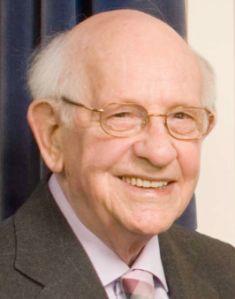Philip M. Woodward
- Fields of study
- Radar
- Awards
- U.K. Royal Academy of Engineering Lifetime Achievement Medal
Biography
Philip Woodward has profoundly influenced radar signal analysis through his application of probability and statistics to recovering data from noisy samples. Dr. Woodward focused on optimizing the information content of the radar signal instead of its electrical strength in a time when the focus was on maximizing the electrical strength by comparison with that of the background noise.
He applied Bayesian probability techniques to eliminate everything but the desired information from radar echoes. The Woodward Ambiguity Function provided the foundation for the development of complex waveforms in modern radars and for description of radar resolution and accuracy. It was able to show graphically how range and velocity accuracy could be traded, how spurious responses appear in both dimensions and the limitations governing the process. With computing power not available at the time it was developed, it now has enabled system designers to assess the capacity of a complex radar transmission to detect the range and radial velocity of a target and to define the optimum detection strategy.
Dr. Woodward’s book, Probability and Information Theory, with Applications to Radar, is considered a classic in the field of radar, and his book entitled My Own Right Time is a classic in the field of horological science. With both fields in mind, the U.K. Royal Academy of Engineering awarded him their first-ever Lifetime Achievement Medal. Dr. Woodward retired in 1980 as a deputy chief scientific officer from the Royal Radar Establishment, where he began working in 1940. He currently resides in Malvern, United Kingdom.
